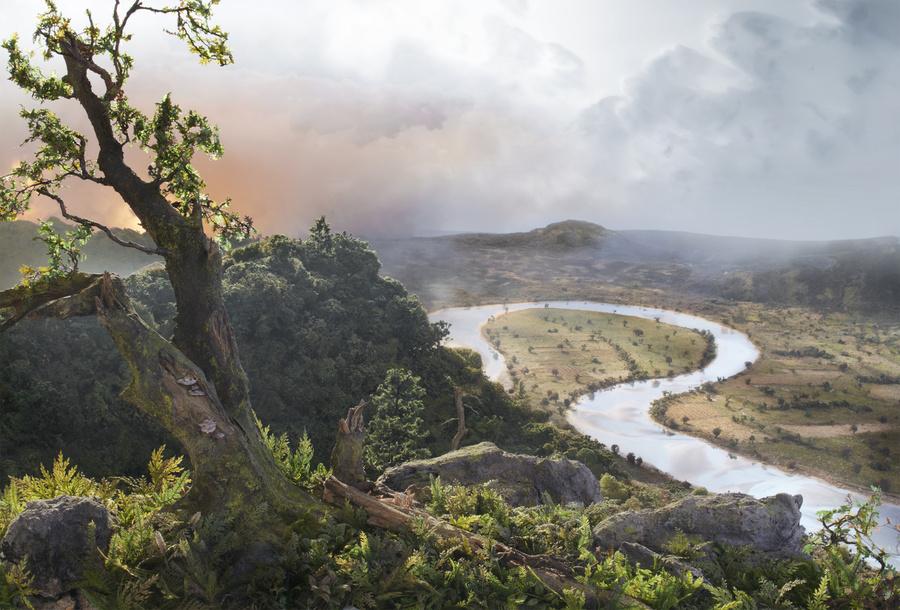
Matthew Albanese, The Oxbow, 2016
“Miniatures offer changes of scale by which we measure ourselves anew,” writes Lia Purpura, in her essay On Miniatures, which reminds us small artworks have an outsized impact on our sense of who we are in the world. We are awed by the huge, but we are inherently intrigued by art better seen through a magnifying glass. The tiniest of the tiny is found in a collection of microminiature art at The Museum of Miniatures in Prague. No microscope is needed to see these 10 artists who create miniature worlds that inspire a sense of wonder while hinting at the dark forces lurking in the real world that surrounds us.
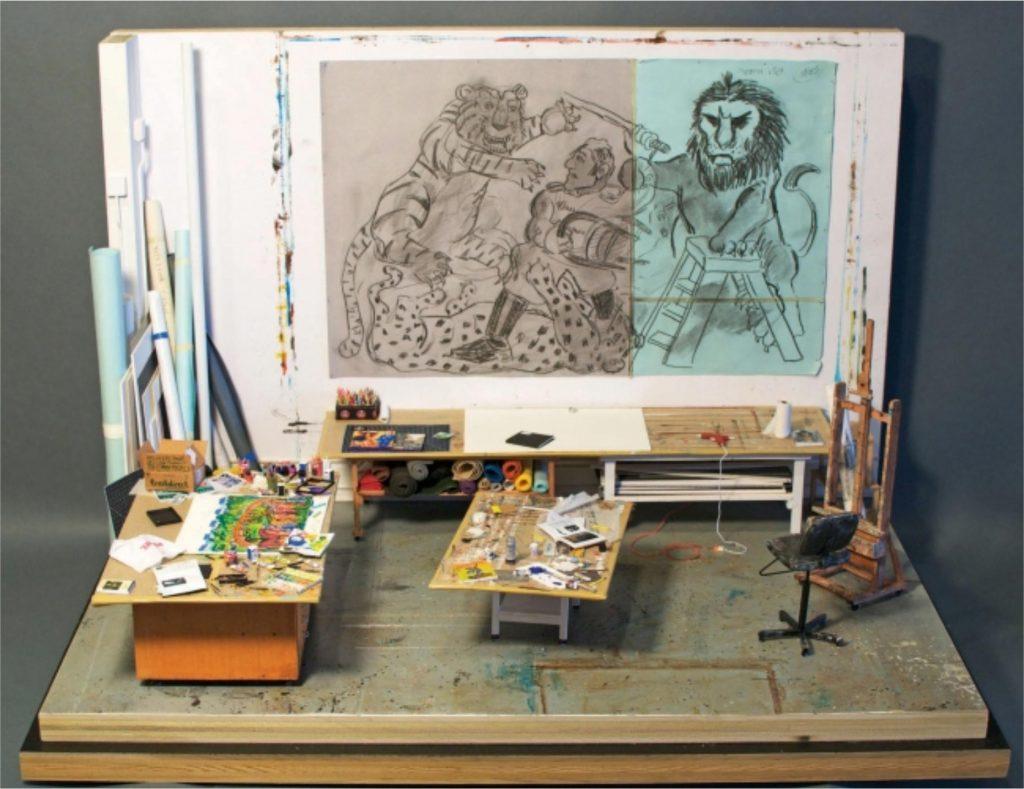
1. New York-based artist Joe Fig started as a painter and has always been interested in the creative process. That theme migrated from his paintings to his meticulously rendered miniatures of artists studios. In an attempt to demystify how artists do what they do, Fig appeals to the Peeping Tom lurking in all of us. By capturing a moment in the working life of each of the well-known artists he has chosen to depict, he invites us to peer into the spaces where the magic of art making happens.
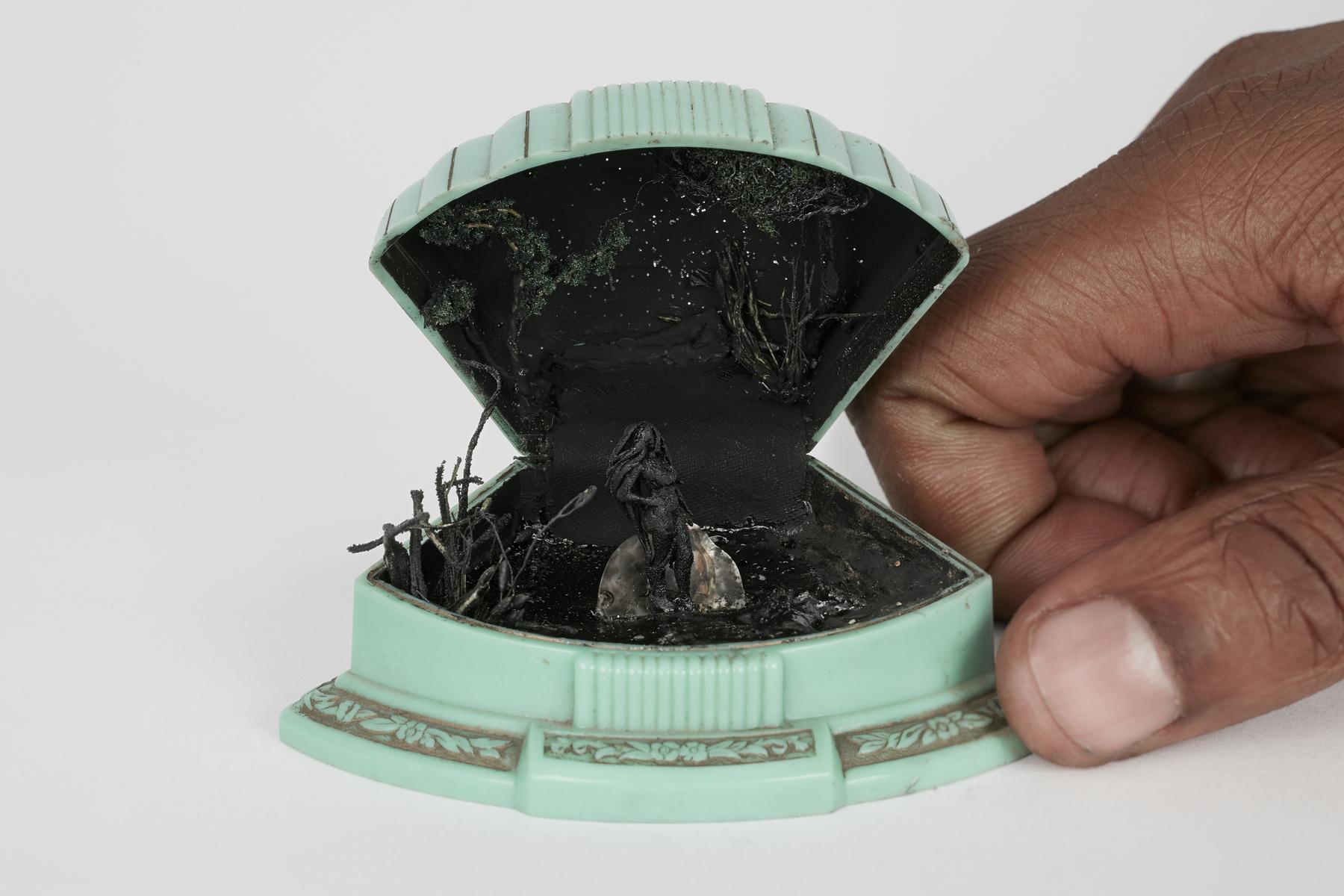
2. Curtis Talwst Santiago is a Canadian-Trinidadian artist currently working in Brooklyn. We associate preciousness with vintage jewelry boxes but in Infinity Series Talwst Santiago considers them a stage set. He transforms each unique box into scenes depicting societal disasters having political overtones or reimagined historically significant artworks. In Deluge (2015), a boat packed with mini refugees is tossed in a threating sea reminiscent of Gericault’s Raft of the Medusa. In Olukun (Venus) (2017), a blackened Botticelli-like Venus situated in a pale green box rises from what appears to be a burnt landscape.
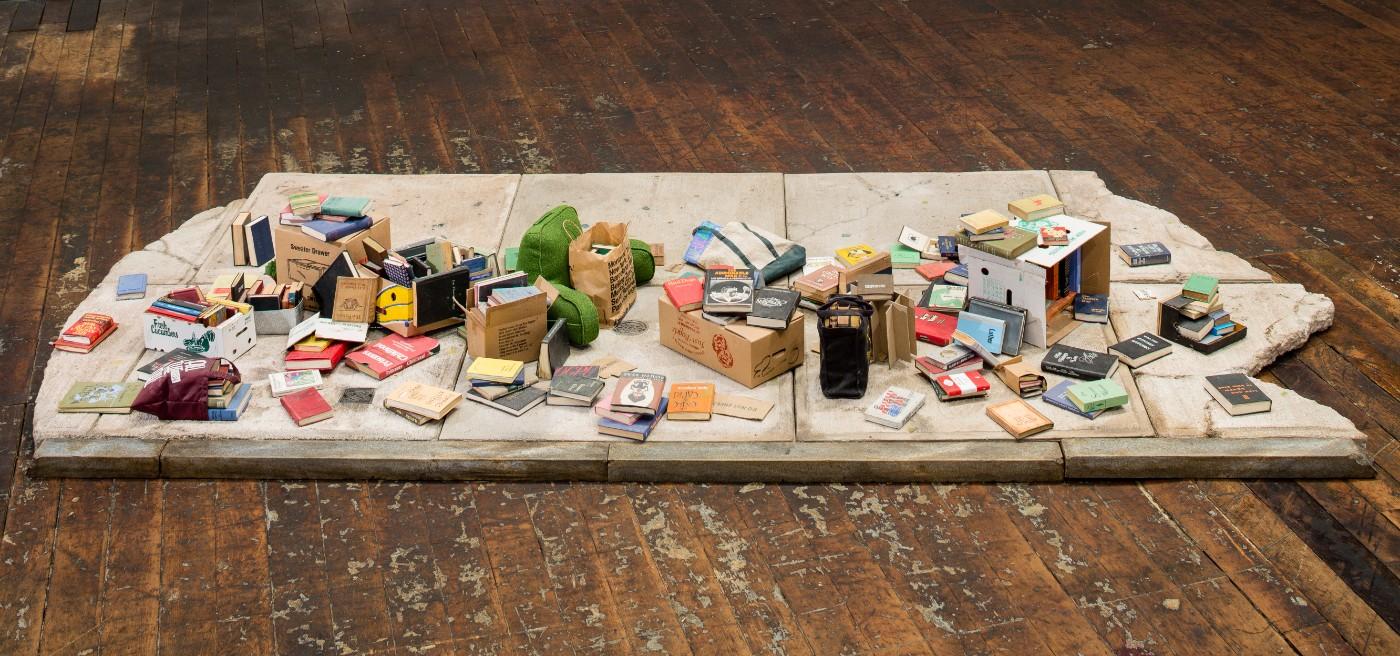
3. The enigmatic Charles LeDray received a “Prix de Rome” in 1997 signaling his creations of tiny objects, particularly mini men’s suits, have risen above “cuteness.” LeDray’s scale, not quite teeny-tiny, something in betweenish, is unnerving. Familiar objects seem imbued with the memory of those who used, touched or wore them. His installations, the result of incalculable hours of intensive attention to detail, create a God’s eye point of view. You can place yourself outside and inside the piece at the same time. For most people, this is a very provocative place to be.
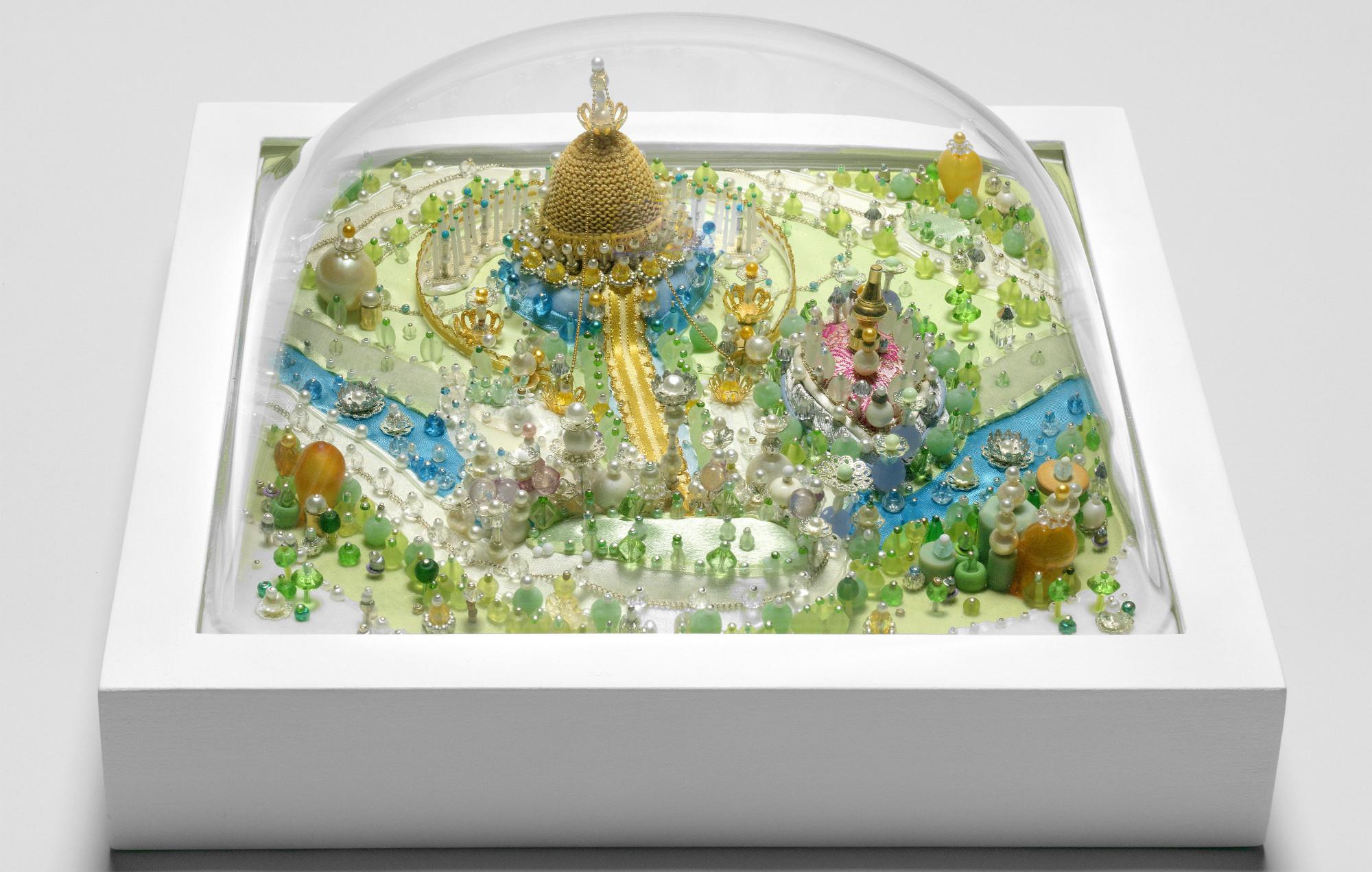
4. In her Bubble Sculptures, Massachusetts-based artist Sally Curcio recaptures in adulthood a child’s enchantment found in snow globes, now executed with the preciousness and glitter of Faberge eggs. Fantasia-like color gleams from thousands of glass beads and found materials that Curcio employs in her mini environments depicting imagined and also real places like New York City’s Central Park. Her adult ecological concerns are hinted at but it is the recollection of childlike wonder that predominates Curcio’s sparkling worlds kept forever pristine under a protective transparent bubble.
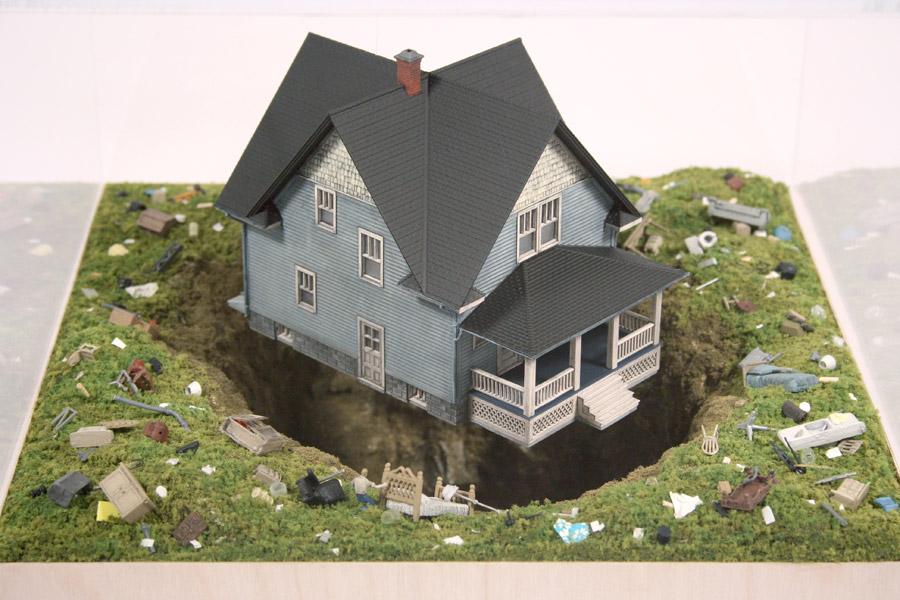
5. For Thomas Doyle the suburban home is the locus of memory, evoking both feelings of omnipotence and dread. His 1:43 scale of homes often subjected to some form of unexplained environmental disaster are kept at a safe distance from us, under glass. Human figures, when they do appear, are so tiny as to be inscrutable. Doyle’s homes are stand-ins for our sense of security in a time of jeopardy. His intentions are clear when he states, “What I’m interested in coincides with our current society, especially now that we’re living in this age of anxiety.”
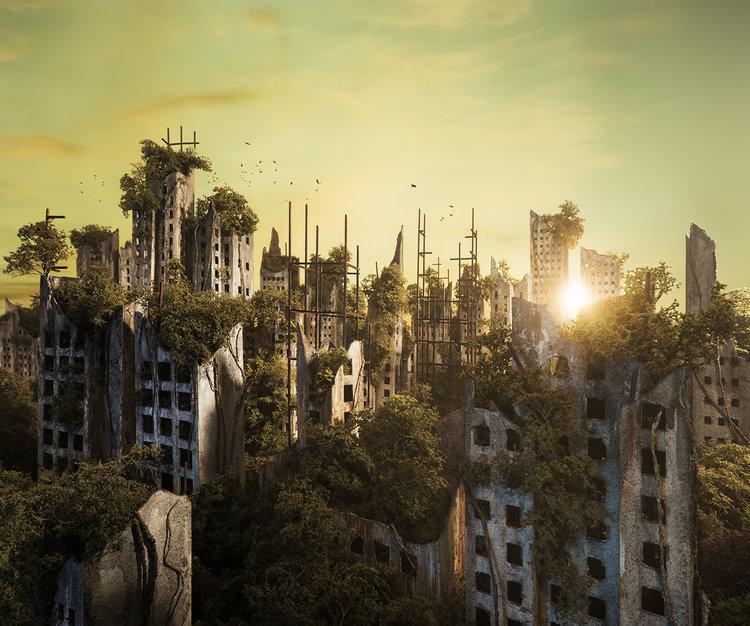
6. Artists Lori Nix + Kathleen Gerber demonstrate that in our current era of human world domination dubbed the Anthropocene, “Time and Mother Nature are the great equalizers.” Their large format color photographs of meticulously built landscapes and scale model architectural environments are devoid of human inhabitants. Something catastrophic may have happened, a meteor hit the earth or a rampant virus wiped out the population, leaving the remains of our intellectual, artistic or mundane pursuits. Nature is depicted midway through the process of retaking the world. It is a prophetic vision at once horrifying and redemptive. Life goes on whether or not we bear witness.
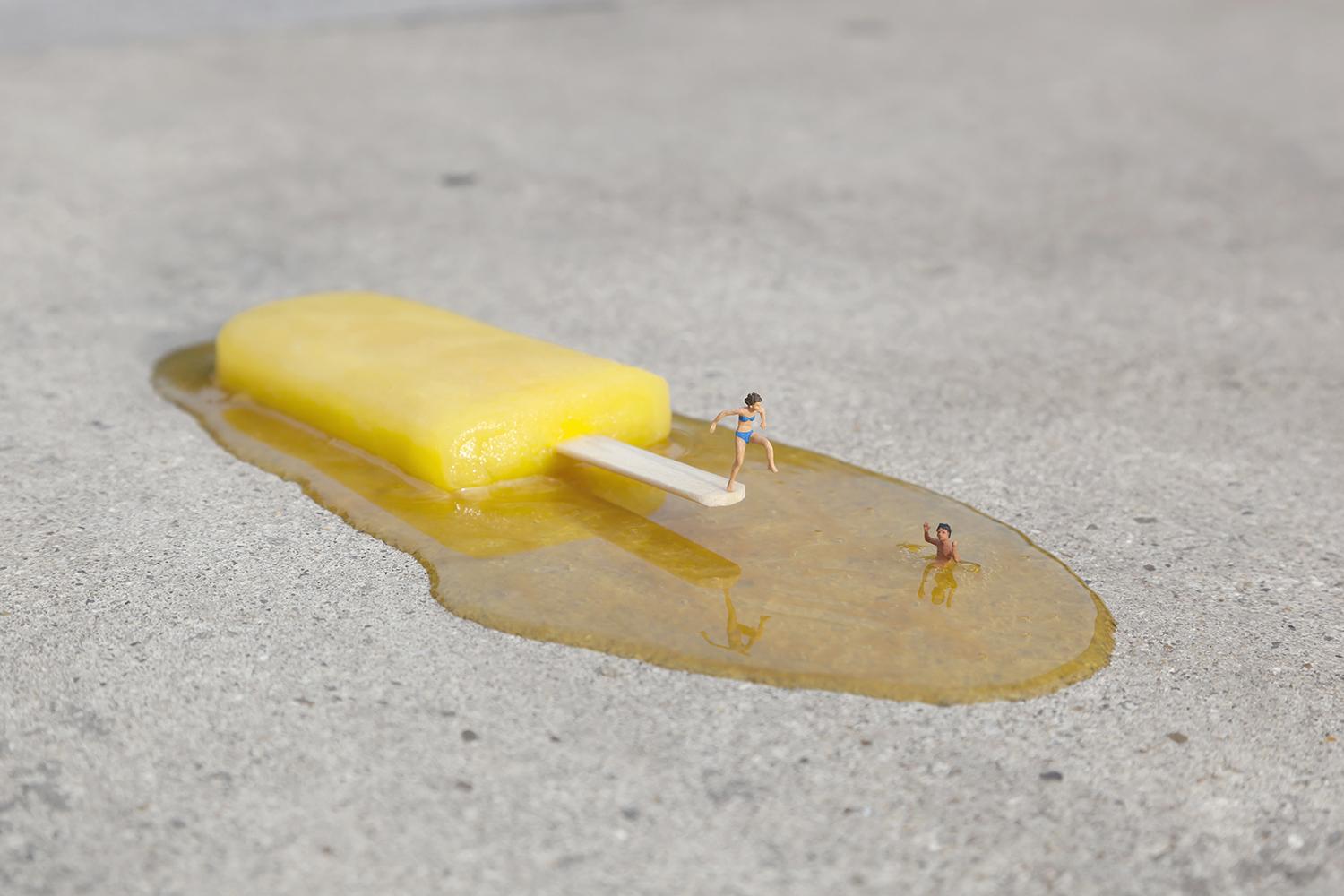
7. Like Banksy, the London-based artist known as Slinkachu “abandons” his street art to be discovered in whatever haphazard way people stumble upon it. Since 2006, the artist, whose real name is Stuart Pantoli, has been utilizing “hidden nooks” around his home city as well as other cities he travels to, like Berlin, Beijing, Doha and New York, to create mini scenarios using tiny figures less than a centimeter high. Slinkachu buys his figures rather than making them. His creativity is invested in finding the sites, setting up the scenes, photographing them while laying stretched out on the pavement, and then leaving them to be swept up in the life of the city.

8. Since April 11th, 2011, Japanese artist Tatsuya Tanaka has created a tiny work of art every single day, photographed it and posted it on his miniature calendar online. Mixing common, everyday objects like a record turntable, clothespins or dice with tiny things, out of scale, induces a smile. He is one of the few artists creating small worlds with the intent to produce joy or at least a chuckle, rather than anxiety-provoking thoughts of impending doom.
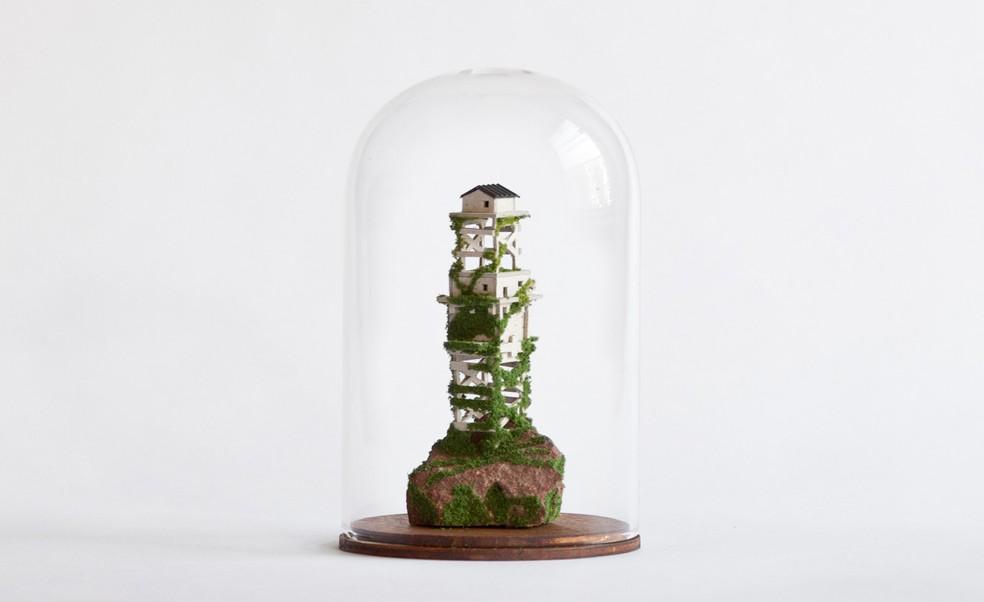
9. Rosa De Jong brings chemistry and art together by housing her micro-mini worlds in test tubes. This unpretentious Amsterdam-based designer, art director and illustrator combines the simplest of materials, cardboard, twigs and twine with site-specific “stuff” like sand from Tenerife to create magical mountains and floating structures small enough to carry in our pockets. She also suspends islands in wood frames between glass and under transparent domes. De Jong is unafraid to admit she loves pretty things and hopes her work makes people happy.
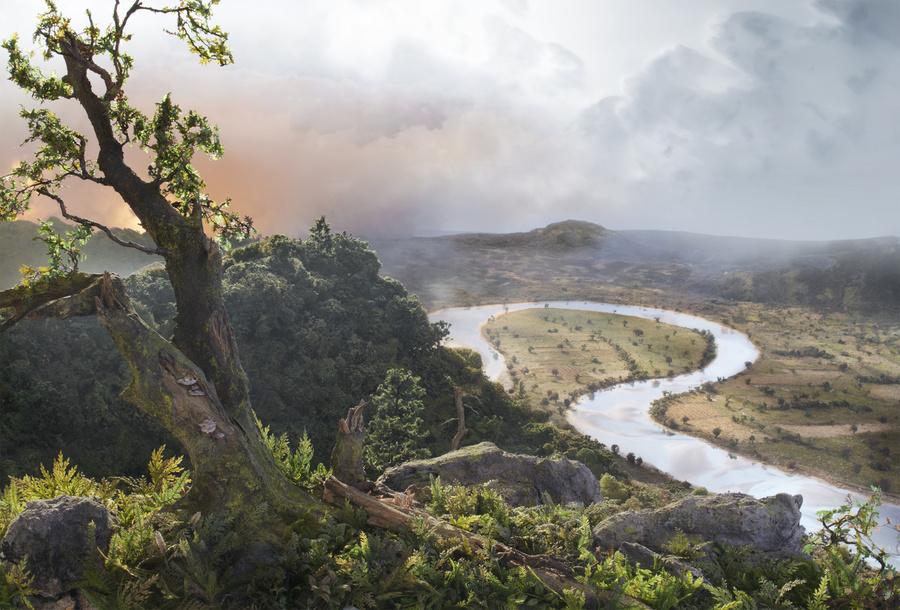
10. Mathew Albanese practices a fascinating method combining photography with handcrafted, deceptively realistic models of dramatic landscapes, photographing them (or sometimes filming them with recreated weather effects) with the intent to “fool the eye.” While the art of trompe l'oeil goes back centuries to the still life paintings found on the walls of Pompeii, Albanese has kicked it up a notch. His photographed constructions are more akin to 21st-century virtual worlds, though they are never digitally manipulated. All illusory effects are embedded in Albanese’s labor-intensive hyper-realistic miniature dioramas, demonstrating awe-inspiring skill and thought-provoking imagery.
Cynthia Close
Cynthia Close holds a MFA from Boston University, was an instructor in drawing and painting, Dean of Admissions at The Art Institute of Boston, founder of ARTWORKS Consulting, and former executive director/president of Documentary Educational Resources, a film company. She was the inaugural art editor for the literary and art journal Mud Season Review. She now writes about art and culture for several publications.




























